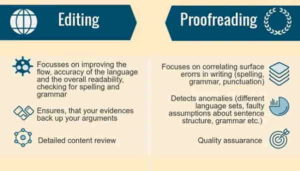How Content Moderation Can Help Your Business Reputation?
It’s no secret that online content can be harmful and offensive. In fact, inappropriate and harmful content can have a negative impact on your brand and customers. That’s why it’s important to have a content moderation strategy in place.
Different platforms require different types of content moderation strategies but all types of content moderation helps in improving your business reputation.
What is The Definition of Harmful and Offensive Content?

Harmful and offensive content can include anything that is illegal, abusive, or offensive. This includes things like hate speech, pornography, and violence or things that can harm your online business reputation.
Who is the Content Moderator?
The role of a content moderator is review content that is offensive, harmful or hateful and apply all types of content moderation methods to deal with it. Content moderation not only save your blog reputation but also provides safe and secure environment for the readers to surf and benefit form your business.
How Do You Moderate Harmful and Offensive Content?
There are a variety of ways to moderate harmful and offensive content. Some of the most common methods include:
1. Blocking Access to Harmful and Offensive Content
You can blocks users from accessing harmful or offensive content using your web filters or firewalls. This will help protect your users from inappropriate content and keep your brand reputation clean.
2. Reporting Harmful and Offensive Content
If you see any harmful or offensive content on your site, you can report it to us. We will then take action to remove it from our platform. Reporting malicious or abusive content helps protect your users from harm and keeps your site compliant with our guidelines.
3. Suspending Accounts for Violating Guidelines
If users are repeatedly violating our guidelines, we may suspend their accounts or ban them from our site entirely. This helps ensure that everyone on our platform follows our guidelines and provides a more consistent user experience.
4. Reprimanding Users for Poor Quality Content
If you find that some of your users are publishing poor quality content, you can reprimand them using feedback tools within the platform. This will help improve their writing skills and promote better quality writing on the site overall.
What are The Different Types of Content Moderation?
There are a variety of content moderation methods that can be used to improve customer experience and protect your brand reputation. The most common types of content moderation are:
1. Disallowance:
This is the process of removing or disabling content from a website or online platform. This can be done in order to protect the reputation of the site or to comply with guidelines. Not allowing certain content at all is the key to protect your online reputation before it is posted and viewed by other users.
2. Removal:
This is the process of removing or deleting content from a website or online platform. The moment it is posted and reviewed, you can instantly remove it so that
3. Modification:
This is the process of changing or altering content so that it is no longer harmful or offensive.
4. Feedback:
This is the process of providing feedback about content so that it can be improved.
5. Notification:
This is the process of sending a notification to the author of the content about why it has been removed or disabled.
6. Moderation:
This is the process of overseeing the content on a website or online platform.
Conclusion
Having a content moderation strategy in place is essential for protecting your brand and customers. It’s also important to remember that different types of content will require different moderation methods.







